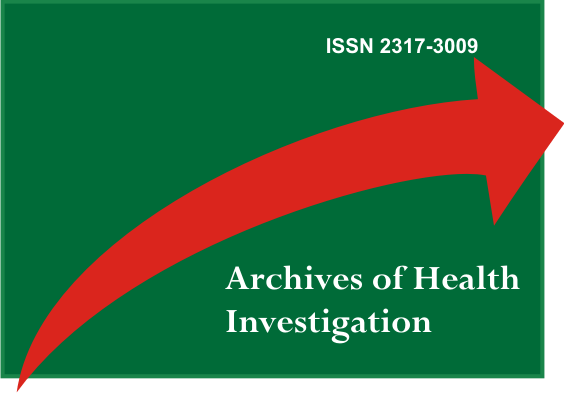Bráquetes autoligáveis – parte I
Resumen
O sucesso do tratamento ortodôntico baseia-se num conjunto de requisitos, o que pode desencadear uma resposta biológica favorável à biomecânica proposta pelo ortodontista, sendo que a opção pelo uso dos bráquetes autoligáveis (AL) pode favorecer a biocompatibilidade dos tratamentos, tornando-os mais simples e eficientes. O apelo comercial aumenta vertiginosamente as verdades estabelecidas e não comprovadas, a longo prazo. Porém, o nível de evidência científica sobre esse tema é relativamente baixo e ainda desperta controversas na Ortodontia, o que motivou a realização dessa revisão por meio de um levantamento literário para respaldar cientificamente as informações disponíveis com relação às principais características dos AL.Descritores: Movimentação Dentária; Desenho de Aparelho Ortodôntico; Fechamento de Espaço Ortodôntico.
Descargas
Citas
Stolzenberg J. The Russell attachment and its improved advantages. Int J Orthod Dent Child. 1935;21(9):837-40.
Harradine N. The history and development of self-ligating brackets. Semin Orthod.2008;14(1):5-18.
Wildman AJ, Hice TL, Lang HM, Lee IF, Strauch Jr EC. Round table: the edge lock bracket. J Clin Orthod. 1972;6(11):613-23.
Tecco S, Di Iorio D, Cordasco G, Verrocchi I, Festa F. An in vitro investigation of the influence of self-ligating brackets, low friction ligatures, and archwire on frictional resistance. Eur J Orthod. 2007;29(4):390-7.
Krishnan M, Kalathil S, Abraham KM. Comparative evaluation of frictional forces in active and passive self-ligating brackets with various archwire alloys. Am J Orthod Dentofacial Orthop. 2009;136(5):675-82.
Reznikov N, Har-Zion G, Barkana I, Abed Y, Redlich M. Measurement of friction forces between stainless steel wires and ‘‘reduced-friction’’ self-ligating brackets. Am J Orthod Dentofacial Orthop. 2010;138(3):330-8.
Pizzoni L, Ravnholt G, Melsen B. Frictional forces related to self-ligating brackets. Eur J Orthod 1998;20(3):283-91.
Berger JL. The influence of the Speed bracket’s self-ligating design on force levels in tooth movement: a comparative in vitro study. Am J Orthod Dentofacial Orthop. 1990;97:219-28.
Henao SP, Kusy RP. Evaluation of the frictional resistance of conventional and self-ligating bracket designs using standardized archwires and dental typodonts. Angle Orthod 2004;74(2):202-11.
Loftus BP, Artun J, Nicholls JI, Alonzo TA, Stoner JA. Evaluation of friction during sliding tooth movement in various bracket-arch wire combinations. Am J Orthod Dentofacial Orthop. 1999;116(3):336-45.
Miles PG. Self-ligating vs conventional twin brackets during en-masse space closure with sliding mechanics. Am J Orthod Dentofacial Orthop 2007;132(2):223-5.
Reicheneder CA, Gedrange T, Berrisch S, Proff P, Baumert U, Faltermeier A, Muessig D. Conventionally ligated versus self-ligating metal brackets-a comparative study. Eur J Orthod. 2008;30(6):654-60.
Damon DH. The rationale, evolution and clinical aplication of the self-ligating brackets. Clin orthod Res. 1998;1(1):52-61.
Pandis N, Polychronopoulou A, Eliades T. Active or passive self-ligating brackets? A randomized controlled trial of comparative efficiency in resolving maxillary anterior crowding in adolescentes. Am J Orthod Dentofacial Orthop. 2010;137(1):12.e1-6.
Scott P, DiBiase AT, Sherriff M, Cobourne MT. Alignment efficiency of Damon3 self-ligating and conventional orthodontic bracket systems: aq randomized clinical trial. Am J Orthod Dentofacial Orthop. 2008;134(4):470.e1-8.
Harradine NW. Self-ligating brackets: where are we now? J Orthod. 2003;30(3):262-73.
Kim TK, Kim KD, Baek SH. Comparison of frictional forces during the initial leveling stage in various combinations of self-ligating brackets and archwires with a custom-designed typodont system. Am J Orthod Dentofacial Orthop. 2008;133(2):187.e15-24.
Voudouris JC. Interactive edgewise mechanisms: form and function comparison with conventional Edgewise brackets. Am J Orthod Dentofacial Orthop. 1997;111(2):119-40.
Johansson K; Lundström F. Orthodontic treatment efficiency with self-ligating and conventional edgewise twin brackets. A prospective randomized clinical trial. Angle Orthod. 2012;82(5):929-34.
Cacciafesta V, Sfondrini MF, Ricciardi A, Scribante S, Klersy C, Auricchio F. Evaluation of friction of stainless steel and esthetic self-ligating brackets in various bracket-archwire combinations. Am J Orthod Dentofacial Orthop. 2003;124(4):395-402.
Chen SS, Greenlee GM, Kim J, Smith CL, Huang GJ. Systematic review of self-ligating brackets. Am J Orthod Dentofacial Orthop. 2010;137(6):726.e1-726.e18.
Čelar A, Schedlberger M, Dörfler P, Berti M. Systematic review on self-ligating vs. conventional brackets: initial pain, number of visits, treatment time. J Orofac Orthop. 2013;74(1):40-51.
Scott P, Sherriff M, Dibiase AT, Cobourne MT. Perception of discomfort during initial orthodontic tooth alignment using a self-ligating or conventional bracket system: a randomized clinical trial. Eur J Orthod. 2008;30(3):227-32.
Ehsani S, Mandich MA, El-Bialy TH, Flores-Mir C. Frictional resistance in self-ligating orthodontic brackets and conventionally ligated brackets: a systematic review. Angle Orthod. 2009;79:592-601.
Carlsson KH, Thorgeirsson T. Active and passive self-ligating systems: evaluation of transversal expansion, bucco-lingual tooth inclination and buccal bone quality [thesis]. Dennmark: University of Aarhus; 2007.
Maltagliati LA, Myiahira YI, Fattori L, Capelozza Filho L, Cardoso M. Transversal changes in dental arches of non-extraction treatment with self ligating brackets. Dental Press J Orthod. 2013;18(3):39-45.
Kochenborger R. Avaliação das alterações dentárias e do perfil facial obtidas no tratamento ortodôntico com bráquetes autoligáveis [dissertação]. São Bernardo do Campo: Universidade Metodista de São Paulo; 2009.
Vajaria R, BeGole H, Kusnoto B, Galang MT, Obrez A. Evaluation of incisor position and dental transverse dimensional changes using the Damon system. Angle Orthod 2011;81(4):647–52.


